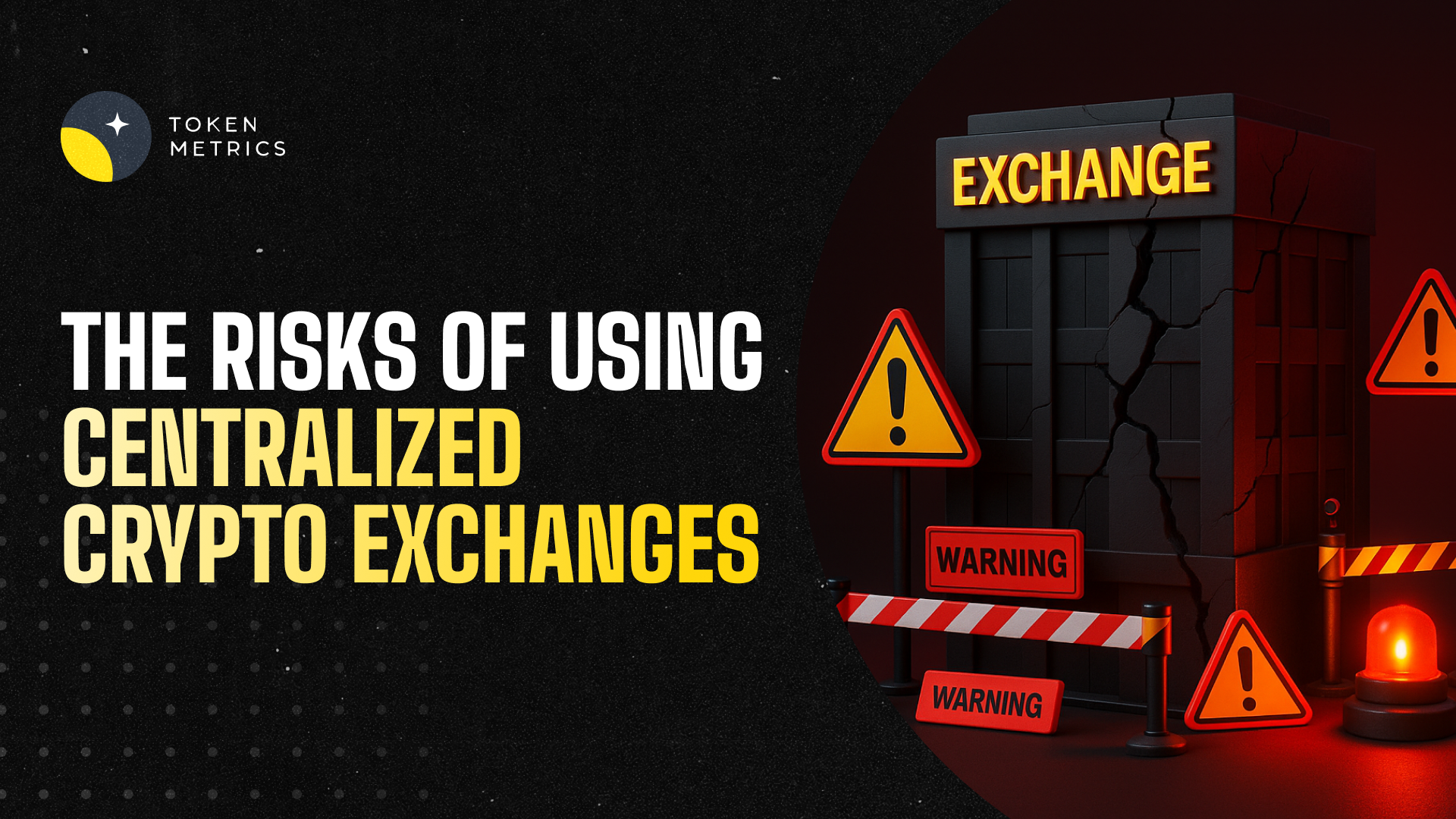
Understanding the Risks of Using Centralized Crypto Exchanges

Introduction
Centralized cryptocurrency exchanges have become the primary venues for trading a wide array of digital assets. Their user-friendly interfaces and liquidity pools make them appealing for both new and experienced traders. However, the inherent risks of using such centralized platforms warrant careful consideration. This article explores the risks associated with centralized exchanges, offering an analytical overview while highlighting valuable tools that can assist users in evaluating these risks.
What Are Centralized Exchanges?
Centralized exchanges (CEXs) operate as intermediaries that facilitate buying, selling, and trading cryptocurrencies. Users deposit funds into the exchange's custody and execute trades on its platform. Unlike decentralized exchanges, where users maintain control of their private keys and assets, centralized exchanges hold users' assets on their behalf, which introduces specific vulnerabilities and considerations.
Security Risks
One of the primary risks associated with centralized exchanges is security vulnerability. Holding large sums of digital assets in a single entity makes exchanges prominent targets for hackers. Over the years, numerous high-profile breaches have resulted in the loss of millions of dollars worth of crypto assets. These attacks often exploit software vulnerabilities, insider threats, or phishing campaigns.
Beyond external hacking attempts, users must be aware of the risks posed by potential internal malfeasance within these organizations. Since exchanges control private keys to user assets, trust in their operational security and governance practices is critical.
Custodial Risk and Asset Ownership
Using centralized exchanges means users relinquish direct control over their private keys. This custodial arrangement introduces counterparty risk, fundamentally differing from holding assets in self-custody wallets. In situations of insolvency, regulatory intervention, or technical failures, users may face difficulties accessing or retrieving their funds.
Additionally, the lack of comprehensive insurance coverage on many platforms means users bear the brunt of potential losses. The concept "not your keys, not your coins" encapsulates this risk, emphasizing that asset ownership and control are distinct on centralized platforms.
Regulatory and Compliance Risks
Centralized exchanges typically operate under jurisdictional regulations which can vary widely. Regulatory scrutiny may lead to sudden operational restrictions, asset freezes, or delisting of certain cryptocurrencies. Users of these platforms should be aware that regulatory changes can materially impact access to their assets.
Furthermore, compliance requirements such as Know Your Customer (KYC) and Anti-Money Laundering (AML) procedures involve sharing personal information, posing privacy considerations. Regulatory pressures could also compel exchanges to surveil or restrict user activities.
Liquidity and Market Risks
Large centralized exchanges generally offer high liquidity, facilitating quick trade execution. However, liquidity can vary significantly between platforms and tokens, possibly leading to slippage or failed orders during volatile conditions. In extreme scenarios, liquidity crunches may limit the ability to convert assets efficiently.
Moreover, centralized control over order books and matching engines means that trade execution transparency is limited compared to decentralized protocols. Users should consider market structure risks when interacting with centralized exchanges.
Operational and Technical Risks
System outages, software bugs, or maintenance periods pose operational risks on these platforms. Unexpected downtime can prevent users from acting promptly in dynamic markets. Moreover, technical glitches could jeopardize order accuracy, deposits, or withdrawals.
Best practices involve users staying informed about platform status and understanding terms of service that govern incident responses. Awareness of past incidents can factor into decisions about trustworthiness.
Mitigating Risks Using Analytical Tools
While the risks highlighted are inherent to centralized exchanges, utilizing advanced research and analytical tools can enhance users’ understanding and management of these exposures. AI-driven platforms like Token Metrics offer data-backed insights into exchange security practices, regulatory compliance, liquidity profiles, and overall platform reputation.
Such tools analyze multiple risk dimensions using real-time data, historical performance, and fundamental metrics. This structured approach allows users to make informed decisions based on factual assessments rather than anecdotal information.
Additionally, users can monitor news, community sentiment, and technical analytics collectively via these platforms to evaluate evolving conditions that may affect centralized exchange risk profiles.
Practical Tips for Users
- Research exchange reputation: Evaluate past security incidents, user reviews, and transparency of operations.
- Stay updated on regulations: Understand how regulatory environments may impact exchange functionality and asset accessibility.
- Limit exposure: Avoid holding large balances long-term on any single exchange.
- Utilize research platforms: Leverage AI-powered tools like Token Metrics for detailed risk analysis.
- Consider withdrawal security: Enable multi-factor authentication and regularly verify withdrawal addresses.
- Diversify custody approaches: When appropriate, combine exchange use with self-custody solutions for asset diversification.
Conclusion
Centralized cryptocurrency exchanges continue to play a significant role in digital asset markets, providing accessibility and liquidity. Nevertheless, they carry multifaceted risks ranging from security vulnerabilities to regulatory uncertainties and operational challenges. Understanding these risks through a comprehensive analytical framework is crucial for all participants.
Non-investment-focused, AI-driven research platforms like Token Metrics can support users in navigating the complexity of exchange risks by offering systematic, data-driven insights. Combining such tools with prudent operational practices paves the way for more informed engagement with centralized exchanges.
Disclaimer
This content is provided solely for educational and informational purposes. It does not constitute financial, investment, or legal advice. Readers should conduct their own research and consult qualified professionals before making any financial decisions.

.svg)

Create Your Free Token Metrics Account

.png)




%201.svg)
%201.svg)


%201.svg)









.svg)




.png)